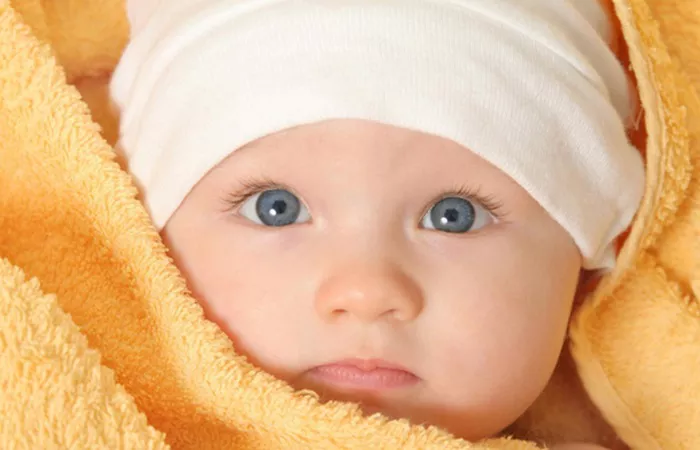Yellow eyes in newborns, often a sign of jaundice, can be concerning for parents. Jaundice occurs when there is a high level of bilirubin in the blood. Bilirubin is a yellow substance made during the normal breakdown of red blood cells. While jaundice is common in newborns, understanding how to manage it is crucial. This article will discuss causes, symptoms, and ways to reduce yellow eyes in newborns.
Understanding Jaundice
Jaundice is a common condition in newborns. It usually appears within the first few days after birth. About 60% of newborns develop jaundice. It is often harmless and resolves on its own. However, in some cases, it may require treatment.
Causes of Jaundice
There are several reasons jaundice can occur in newborns. One common cause is physiological jaundice. This happens because a newborn’s liver is not fully developed. The liver may not be able to process bilirubin effectively.
Another cause is breast milk jaundice. This condition can occur when substances in breast milk interfere with bilirubin processing. Breastfeeding can also lead to dehydration, which can increase bilirubin levels.
In some cases, jaundice can result from underlying health issues. These can include blood group incompatibilities or infections. Always consult a pediatrician if you notice any signs of jaundice.
Recognizing the Symptoms
Parents should be aware of the symptoms of jaundice. The most obvious sign is the yellowing of the skin and eyes. This can first appear on the face. As bilirubin levels rise, the yellowing may spread to the chest, abdomen, and limbs.
In addition to yellowing, other symptoms may occur. These can include lethargy, poor feeding, and irritability. If you notice any of these symptoms, seek medical advice promptly.
Diagnosis of Jaundice
If jaundice is suspected, your pediatrician will perform a physical examination. They will check for yellowing of the skin and eyes. They may also use a tool called a bilirubinometer. This device measures bilirubin levels in the skin.
If necessary, blood tests may be conducted. These tests can confirm the level of bilirubin in the bloodstream. Based on the results, your doctor will recommend appropriate treatment.
Treatment Options
Treatment for jaundice depends on its severity. In most cases, mild jaundice requires no treatment. The condition often resolves on its own within a few weeks. However, more severe jaundice may need medical intervention.
Phototherapy
One common treatment is phototherapy. This method uses special blue lights to help break down bilirubin in the skin. The baby is placed under these lights for several hours a day. Phototherapy is effective and safe for most infants.
During phototherapy, the baby may need to be undressed. This allows the light to penetrate the skin better. The eyes must be protected from the light using patches or goggles.
Exchange Transfusion
In severe cases, an exchange transfusion may be necessary. This procedure involves replacing the baby’s blood with donor blood. This helps to quickly lower bilirubin levels. This treatment is usually reserved for very high bilirubin levels that pose a risk to the baby.
Home Care Tips
While medical treatment is essential, there are also home care strategies to help reduce jaundice.
Encourage Feeding
Feeding your newborn frequently is vital. Whether breastfeeding or bottle-feeding, aim for at least 8-12 feedings a day. Frequent feeding helps the baby eliminate bilirubin through urine and stool.
For breastfeeding mothers, ensure your baby latches on properly. A good latch promotes effective feeding. If you’re struggling, consider consulting a lactation consultant.
Monitor Diaper Output
Keeping track of your baby’s diaper output can provide insights into their hydration levels. Your newborn should have several wet diapers each day. Adequate hydration helps flush out bilirubin from their system.
Sunlight Exposure
Natural sunlight can help reduce jaundice. Place your baby in a well-lit room with indirect sunlight. However, avoid direct sunlight to prevent sunburn. Short, safe periods of sun exposure can help in mild cases.
Maintain a Comfortable Environment
Keeping your baby comfortable is important. Dress them in light clothing to prevent overheating. A comfortable environment promotes better feeding and relaxation.
When to Seek Medical Help
If jaundice appears or worsens after the first few days, contact your pediatrician. Rapidly increasing jaundice levels may require immediate attention. Additionally, if your baby shows signs of lethargy, poor feeding, or irritability, seek help.
Preventive Measures
While not all cases of jaundice can be prevented, some measures can help reduce the risk. Ensuring proper prenatal care is crucial. Discuss any potential risks with your healthcare provider during pregnancy.
After birth, prompt feeding can also help. Early and frequent feeding helps prevent dehydration. It can also aid in the effective elimination of bilirubin.
Conclusion
Yellow eyes in newborns can be alarming for parents. However, jaundice is common and often resolves on its own. Understanding the causes, symptoms, and treatment options can help you manage the condition effectively.
Always monitor your baby’s condition and seek medical advice when needed. With proper care and attention, you can help your newborn stay healthy and happy.
Related topics:


